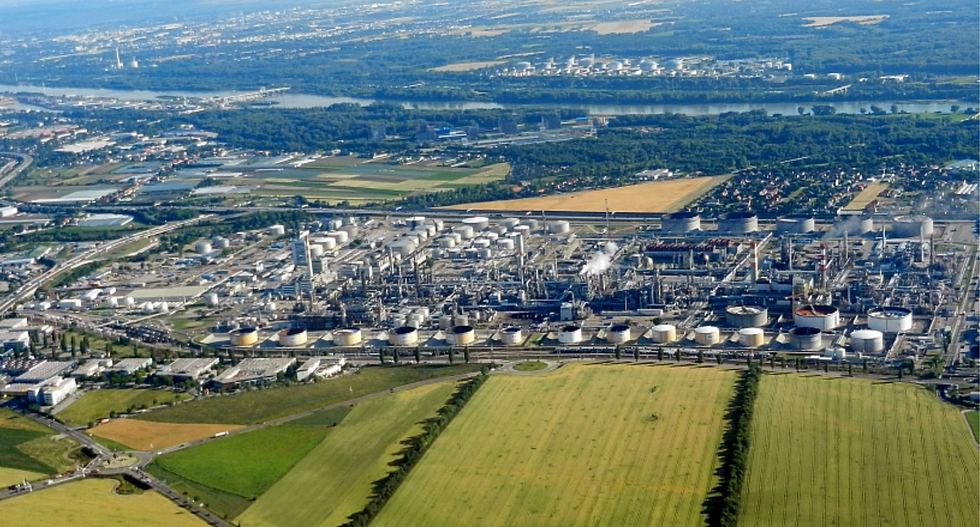Danger of Industrial Pollution
- Jiwoo Jung
- 6 days ago
- 3 min read

Industrial pollution isn’t just smoke from a chimney. It shows up as dirty air, polluted water, hazardous waste, microplastics, and even excess noise, light, and heat. Three features make it challenging: a lot can come from a few places, some pollutants remain for years or decades, and much of the harm is invisible until it accumulates. When pollution builds up in the air we breathe, the soil under our feet, and the water we drink, it raises the risk of heart and lung disease, some cancers, and long-lasting damage to nature.
Air is where most people notice it first. Fine particles (often called PM2.5), nitrogen oxides, and other gases can trigger headaches, asthma attacks, and irritation of the eyes and throat. Large flares or industrial accidents can cause short, sharp spikes that people see and smell. Water takes the slower hit. Discharges and spills can carry heavy metals, solvents, medicines, and “forever chemicals” such as PFAS into rivers and groundwater. These substances are hard to remove, can move up the food chain, and often force costly upgrades for water providers.
There are clear economic impacts as well. While factories and infrastructure bring jobs and investment, the benefits can be offset by higher health costs, lost work days, reduced tourism, and expensive clean-ups. The good news is that cleaner production usually pays for itself over time. Closed-loop systems that reuse materials, safer substitute chemicals, better leak detection, and modern filters reduce waste, prevent accidents, and improve efficiency.
Why this matters in Austria—and in Vienna. Austria’s industry is comparatively efficient, but our landscape can trap pollution, especially in winter when valleys hold cold air in place. Vienna is growing quickly and sits close to major energy and industrial sites in the east. That brings jobs, district heating, and energy security, but it also means we must pay attention to flaring, odour incidents, and the combined effects of traffic, factories, and waste-to-energy plants. Public trust stays high when monitoring is transparent, alerts arrive quickly, and independent checks are routine.
Vienna already does many things well, from excellent drinking water to strong waste services and ambitious climate plans. To keep that edge, the city and its partners can keep tightening controls on hazardous air pollutants, cut PFAS at the source, prevent pellet and microplastic losses in industrial areas, and pilot advanced treatment for chemicals that are hard to remove. Good governance matters as much as good technology: clear rules for reporting incidents, rapid coordination between departments, and simple public dashboards that show emissions, water quality, and enforcement results help everyone understand what is happening and why.
The Danube connects us to our neighbours. The river runs through or borders ten countries, so what happens upstream does not stop at a frontier. A refinery spill or a barge accident can travel far. That is why cross-border tools—joint river surveys, early-warning systems for accidents, and shared standards—are essential. Here in Vienna, priorities are practical: reduce industrial discharges at the source, strengthen containment at facilities near the water, keep spill-response equipment ready at key river kilometres, and expand checks for persistent pollutants like PFAS, pharmaceuticals, and microplastics in both water and sediments. Public awareness helps, too; when people know how alerts work and what to do during a water incident, the whole city responds better.
What to ask for — plain and simple. Industry should share real-time emissions data where feasible, invest in the best available controls, and demonstrate that persistent chemicals are destroyed or captured safely. Regulators should enforce rules consistently, focus on the highest-risk sites, and require accident-prevention plans that account for extreme weather. Residents can support policies that cut pollution at the source and choose products and services that do the same.
What you can do today: Choose durable, repairable products and avoid everyday items that rely on “forever chemicals” when safer options exist. Prefer refillable and returnable packaging. Take solvents, paints, oils, and electronics to official collection points—never down the drain or into household rubbish. Walk, cycle, or use public transport when possible; fewer tailpipe emissions mean cleaner air for everyone. In Vienna, report unusual odours, visible flaring, dead fish, or discoloured water through the city’s hotlines and apps so authorities can act quickly. Join Danube and canal clean-ups, support school projects and citizen-science sampling days, and ask nearby facilities to share plain-language information about their emissions and safety plans. These everyday choices—and steady civic engagement—help keep industry accountable and our air and river clean.
Industrial pollution is not inevitable. With clear rules, modern technology, and shared information, Vienna—and Austria—can protect people’s health, safeguard the Danube, and keep the economy thriving at the same time.



Comments